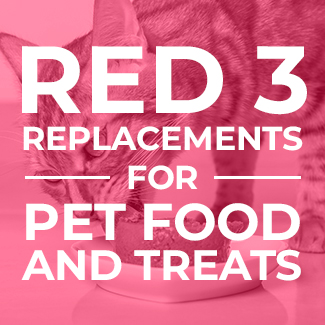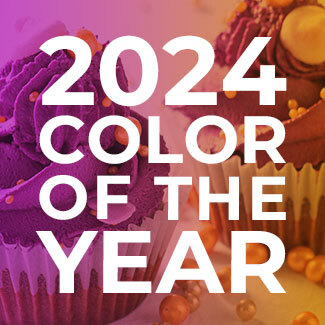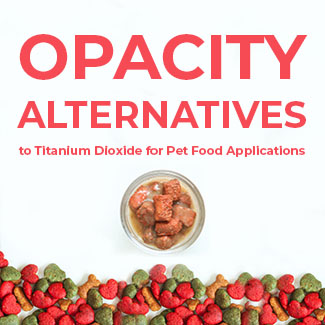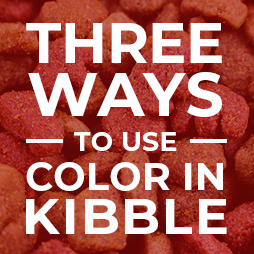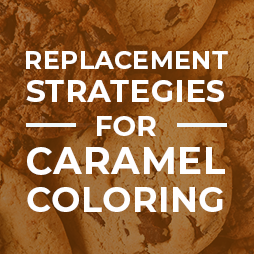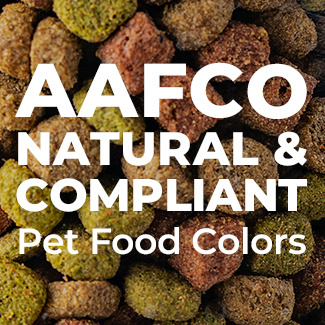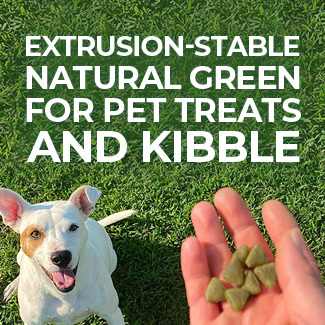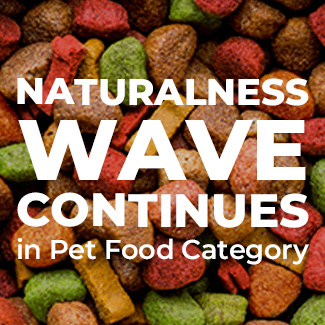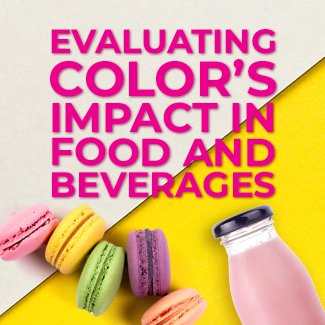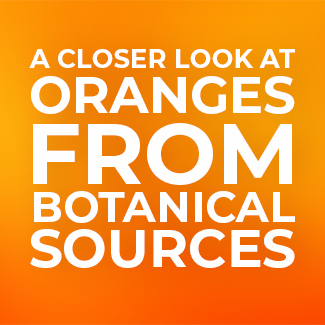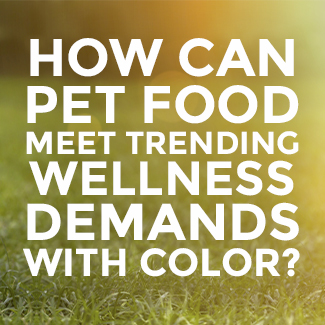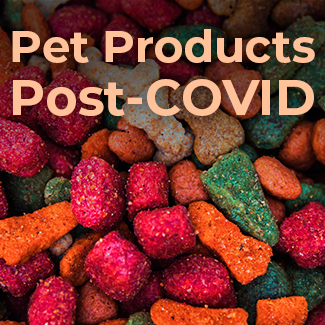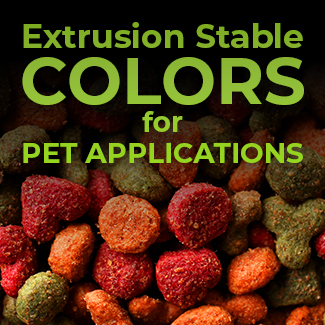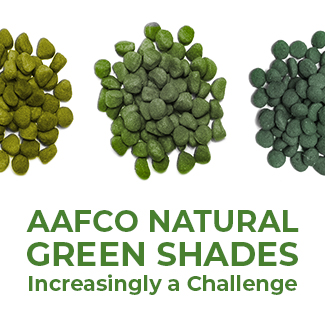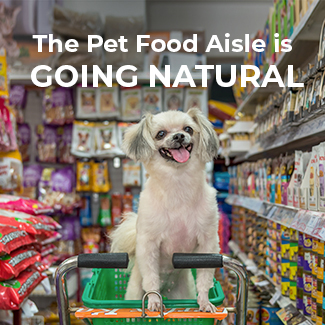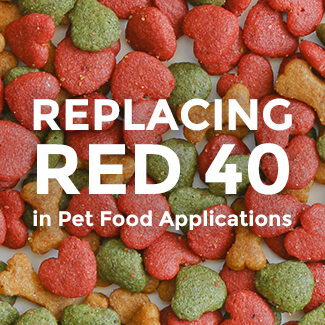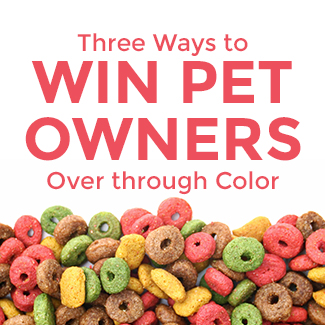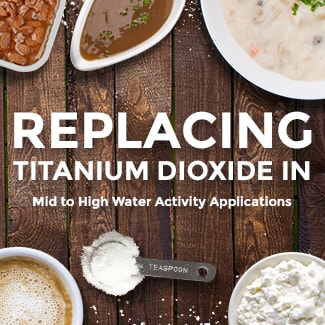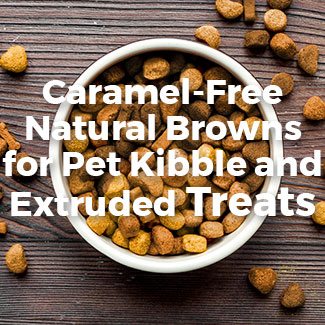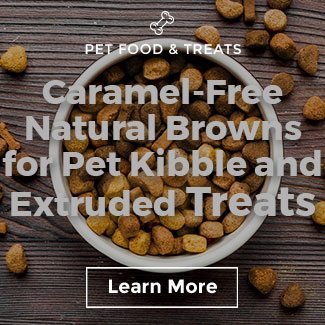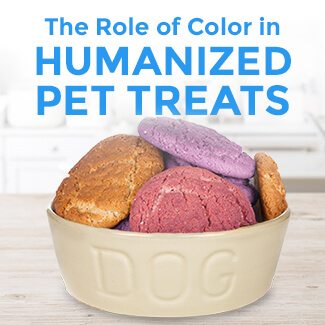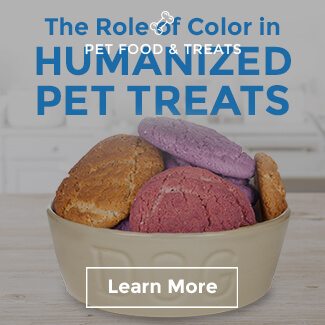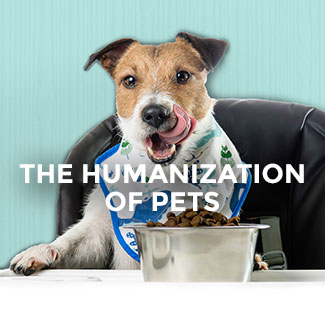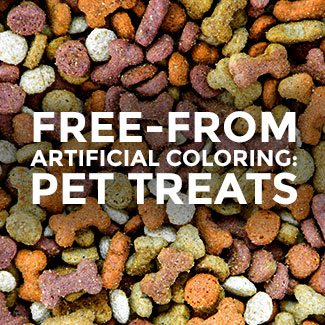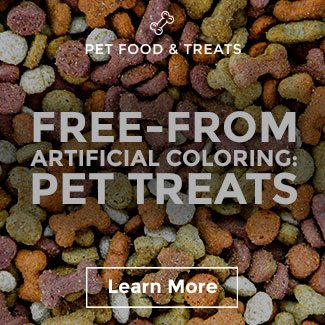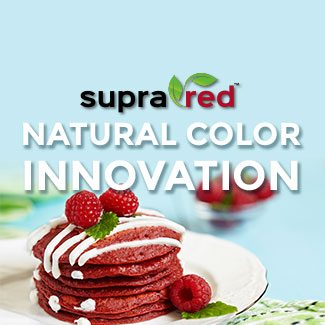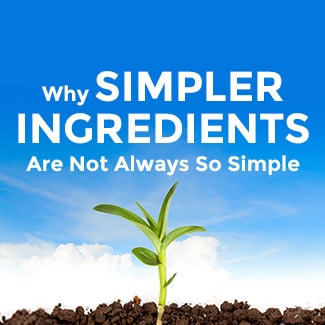Natural Color Brings Protein Flavors to Life in Kibble Mixes
The divide between mainstream and specialty pet food shoppers is shrinking. In 2019, a substantial gap existed between the color and claim preferences of these two groups in Sensient’s consumer research. However, when we conducted a new study in December 2023, one of our most fascinating findings was that the two groups have converged on a strikingly similar set of preferences: pet owners want to buy colorful AND natural kibble for their pets.
Sensient’s consumer research showed that both mainstream and specialty pet food shoppers prefer the most colorful kibble option regardless of product positioning.

Naturalness continues to be on the rise, with over 40% of shoppers seeking all-natural claims in pet food, but protein content is a focus as well (Mintel 2023). One in three pet food purchasers say they are motivated by real meat being the first ingredient (Mintel 2023).
To reinforce specific meat ingredients and the natural claims rising in popularity, brands can use natural colors to emphasize certain proteins and flavors.
Let’s take a look at color for some of the current top protein kibble choices:

Natural Colors for
Beef Flavors
Depending on whether you are trying to depict raw or cooked beef, kibble may be red or brown hues.
For deep reds appropriate for beef flavors, extrusion-stable options like Sensient’s stabilized beet solutions UberBeet™, Magna Ruby™, and SupraRed™ are ideal. Carmine is also extremely heat-stable and can be a great choice for kibble.
If you’re targeting a deeper brown, blends using Sensient’s Sienna™ fruit juice or other color solutions in our portfolio including anthocyanin blends can reach cost-effective dark brown hues perfect for beefy flavors.

Natural Colors for Chicken, Duck,
and Turkey Flavors
Chicken stands the test of time for pet food, topping the flavor list by at least a 50% margin in each of the past five years. According to Mintel, Duck is one of the top 5 fastest-growing flavors in kibble today, and Turkey consistently appears in the top 5 most prominent flavor groups for pet food.
Poultry profiles tend to suggest either white or light brown for most consumers, and those bright pieces of kibble can really stand out in a bowl. To achieve lighter hues in applications like kibble, treats, or retort canned food, the base shade must be lightened. Titanium dioxide is a highly stable and cost-effective solution for whitening, but many brands and retailers are removing it from products and shelves under pressure from consumer groups.
Sensient’s Avalanche™ portfolio is designed to close the gap for developers seeking clean label white options in various applications. With over 40 different solutions available today, Sensient’s color experts can help you select the right fit for your product and processing conditions.

Natural Colors for
Salmon Flavors
According to Mintel, salmon flavors are growing in popularity amongst pet food launches year-over-year, with salmon-flavored launches up 10% since 2019. Pinks are perfect for salmon protein profiles in pet food.
To achieve stable salmon pink hues in kibble, natural beet-based solutions like Magna Ruby™ and SupraRed™ can work extremely well. Developers can also look to carmine for extremely stable pink hues.
If you’re targeting a raw salmon visual, orange may be your ideal hue. In kibble, oranges can be achieved with natural colors like paprika, annatto, or beta carotene. Many brands seek to add “Made in USA” claims to their pet food packaging, so Sensient offers paprika and other natural colors with the United States as the country of origin to support those claims.

Natural Colors for
Bacon Flavors
Who doesn’t love bacon? Pet kibble launches with a bacon flavor have increased over 25% since 2019 (Mintel 2024), and a bright red color is a perfect visual representation of that delicious bacon profile.
To achieve bright, Red 40-esque hues in kibble with natural solutions, highly stable, highly concentrated solutions are necessary.
Carmine is widely used in the pet industry for heat-stable reds, but for even cleaner beet juice or vegetable juice labeling, Sensient’s UberBeet™ portfolio is the right fit. SupraRed™ and Magna Ruby™ are beet-based solutions with enhanced heat stability and increased color concentration to help developers achieve the bright reds of bacon in applications like kibble.

Natural Colors for Peanut Butter,
Gravy, and More
While darker brown hues typically signal flavors like beef or other cooked meats, lighter brown kibble can represent accent flavors like peanut butter, gravy, or liver.
To achieve these lighter browns, Sensient’s Sienna™ fruit juice is an excellent clean label alternative to Class I and II caramel. To achieve specific brown hues that may be warmer or cooler to match a specific flavor profile, our color experts can help create a blend with other natural colors, such as annatto or beta carotene.
The FDA and AAFCO provide guidance on natural and synthetic colors that can be safely used in pet food and treats. Sensient’s color experts have combined decades of experience with the industry’s broadest color portfolio to achieve a wide rainbow in kibble, canned food, and treats using colors safe and approved for use in pet products.
We take safety a step further
with our industry-leading food
safety program, Certasure™.
Certasure™ combines stringent quality and authenticity testing with rigorous vender certification, best manufacturing practices, and strict employee safety standards to provide the science of certainty in protecting the botanically sourced colors our customers need. Our customers can work confidently knowing that our food colors are safe for pets AND people.




